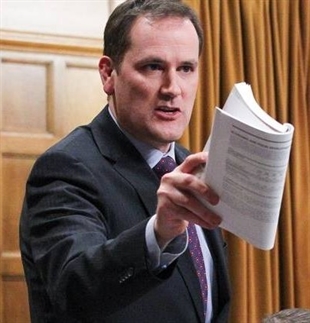
Dan Albas a Member of Parliament.
Image Credit: SUBMITTED/Dan Albas
January 20, 2019 - 12:00 PM
OPINION
As many accountants and tax professionals will know, January of each year is the opening of “income tax season”– the period of time up until April 30th when in this case your 2018 income taxes must be filed with the Canada Revenue Agency.
If you follow political discussions you will likely have heard claims that income taxes have gone up as well as counter claims that they have gone down.
For this week’s report I wanted to review federal income tax changes over the past 18 years for more context on this subject.
Going back to the year 2000, at that time there were just three federal income tax brackets, your first $30,004 was taxed at a rate of 17%, the next $30,004 up to $60,009 was taxed at a rate of 25% and all income over $60,009 was taxed at 29%.
In 2013, there were some significant changes.
A fourth income tax bracket on your income up to $43,561, that would be taxed at a lower rate of 15%.
The second tax bracket was adjusted so that income between $43,562 up to $87,123 was taxed at a rate of 22%, while the third tax bracket on income over $87,123 up to $135,054 was taxed at a rate of 26%.
Income over $135,054 was taxed at 29%
The net effect of these tax changes was that lower income workers earning up to $43,561 paid 2% less tax.
On income in the other tax brackets there were also tax breaks of 3% with the exception of the highest tax bracket.
In the 2016 tax year there were again further changes to the tax brackets including the addition of a 5th tax bracket.
For the lowest income earners up to $45,202 there was no change and the income tax rate remained at 15%.
On the next tax bracket from $45,202 up to $90,563, taxes were reduced from 22% in 2015 down to 20.5%.
Income between $90,563 up to $140,388 remained unchanged at 26% and income over $140,388 up to $200,000 was taxed at the same 2015 tax rate of 29%.
The new 5th tax bracket on income over $200,000 was taxed at 33%.
The net effect of these tax 2016 changes was that lower income citizens did not receive a tax break but those in the middle did.
Higher income earners were taxed either at the same rate or more.
For this current 2018 tax year the income tax brackets remain unchanged at 15%, 20.5%, 26%, 29% and 33% respectively.
This comparison does not include the elimination of many income tax credits that have occurred since 2016 nor does it account for the lowering of the GST.
It also does not include the Working Income Tax Benefit that is now referred to the Canada Workers Benefit or to the Canada Child Benefit (CCB).
Depending on your income tax situation, you may be paying more or less since the year 2000.
Given the scale of tax reduction to many income tax brackets in 2013, combined with the middle income tax bracket reduction in 2016, many Canadians are likely paying less federal income tax today.
Although there have been tax reduction efforts federally, most will know that income taxes in many provinces have risen in addition to increases in property taxes.
My question this week:
Are you satisfied with the total amount of tax that you pay for the services and programs you receive?
I can be reached at Dan.Albas@parl.gc.ca or call toll free 1-800-665-8711.
— Dan Albas is the Member of Parliament for the riding of Central Okanagan Similkameen Nicola. This riding includes the communities of Kelowna (specific boundaries), West Kelowna, Peachland, Summerland, Keremeos, Princeton, Merritt and Logan Lake.
We welcome your comments and opinions on our stories but play nice. We won’t censor or delete comments unless they contain off-topic statements or links, unnecessary vulgarity, false facts, spam or obviously fake profiles. If you have any concerns about what you see in comments, email the editor.
News from © iNFOnews, 2019